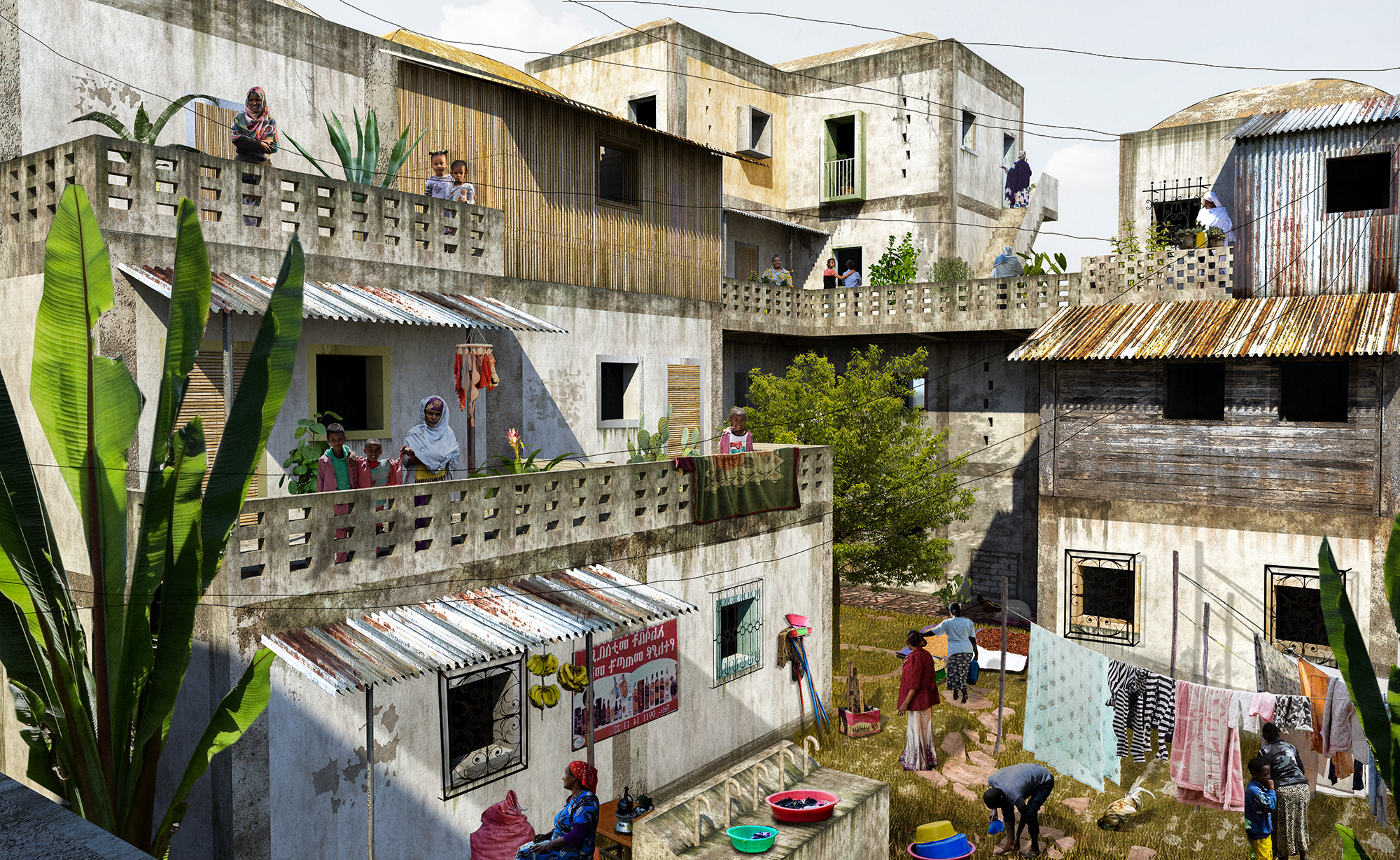Downloads
DOI:
https://doi.org/10.7480/spool.2018.2.2094Abstract
Rhizome faces the poor living conditions of Ethiopia’s capital Addis Ababa. The project offers a robust alternative solution to top-down developments promoted by the governments in the Global Urban South. Instead of high-rise buildings, based on Western models, planned by the local government, a system of human-scale community-driven low-rise buildings is developed. The design can either be built in concrete, the most used material in the capital, or with local materials. Through interviewing the current inhabitants, redrawing and exploring their environment at all times of day, the essence of the site was grasped. The resulting project is technically feasible, economically competitive, and flexible in construction time and materials.
The backbone of our project is the idea of residential compound, a physical and social structure composed by three elements: two incremental housing blocks and the circulation system. These are clustered together and can be rotated, mirrored and attached to each other creating a series of spaces that compose a hierarchical sequence of community spaces. This enacts a holistic strategy that bridges multiple scales, from the main urban streets, to the intimacy of the compound and, eventually, to the most private space of the dwelling.
How to Cite
Published
License
Copyright (c) 2020 SPOOL

This work is licensed under a Creative Commons Attribution 4.0 International License.




